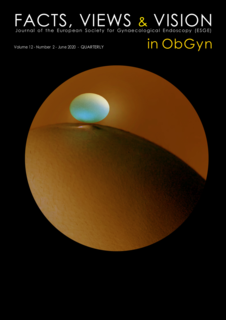Adenomyosis: Disease, uterine aging process leading to symptoms, or both?
Adenomyosis, diagnosis, epidemiology, pathogenesis symptoms
Published online: Aug 05 2020
Abstract
For many decades adenomyosis has been a histological diagnosis in hysterectomy specimens. Traditionally, it has been considered a disease of late reproductive and premenopausal years causing uterine enlargement, dysmenorrhoea and menorrhagia. Recent advances in pelvic and uterine imaging techniques including transvaginal sonography and magnetic resonance imaging were responsible for a shift towards a non-invasive diagnosis and made a significant contribution to a better understanding of its pathogenesis, epidemiology, histological spectrum, and clinical symptomatology. With these non-invasive tools it has been shown that adenomyosis is probably a condition affecting much younger populations and is frequently asymptomatic at an early stage of its development. Regarding symptomatic disease, the distribution and extent of adenomyotic lesions do not correlate consistently with the various symptoms that are considered typical of adenomyosis. More importantly, accurate diagnosis of adenomyosis suffers from a lack of consensus among experts on imaging and even histological diagnostic criteria. Several pathogenetic theories have attempted to shed light on the establishment, evolution and distribution of adenomyotic lesions within the uterine wall, including the tissue injury and repair (TIAR) mechanism, metaplasia, and the more recent genetic-epigenetic theory. So far, none of these can adequately and independently explain the appearance of all types of adenomyosis. This review paper attempts a correlation between the proposed pathogenetic theories and the clinical and histological spectrum of adenomyosis, in an effort to give a plausible explanation of the evolution of this condition from an asymptomatic state to a disease, through synthesis of the existing data.



